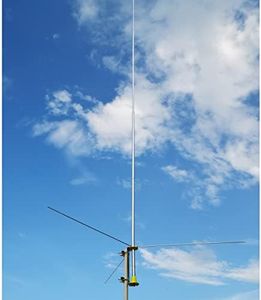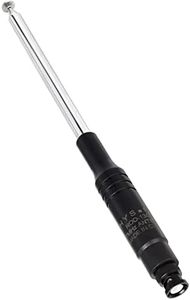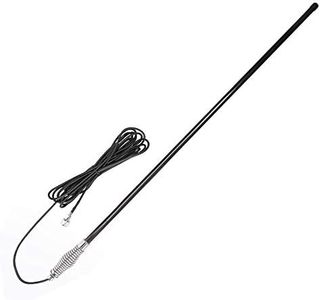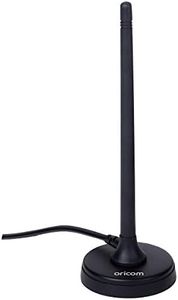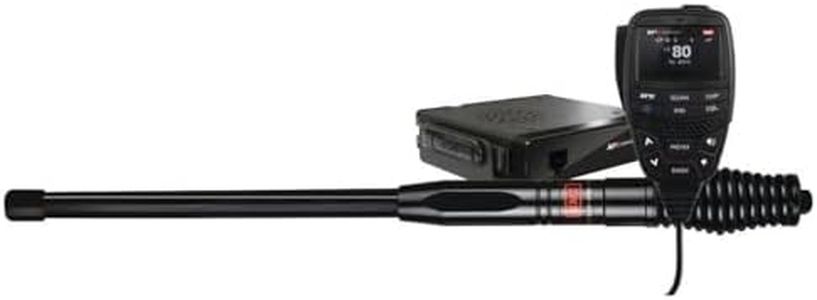We Use CookiesWe use cookies to enhance the security, performance,
functionality and for analytical and promotional activities. By continuing to browse this site you
are agreeing to our privacy policy
10 Best Cb Antennas
From leading brands and best sellers available on the web.By clicking on a link to a third party's website, log data is shared with that third party.
Buying Guide for the Best Cb Antennas
Choosing the right CB (Citizens Band) antenna is essential for getting a clear, strong signal when communicating via a CB radio. The ideal antenna can help you maximize range, reduce static, and ensure your transmissions are heard by others. When shopping for a CB antenna, you'll want to match it to your specific needs, such as where you'll use it (vehicle, home, or portable), how important range and clarity are to you, and how much flexibility you need in mounting and setup options. Understanding a few crucial specs will make it much easier to pick an antenna that’s a perfect fit for your needs.Antenna LengthAntenna length is one of the most important factors affecting CB antenna performance. The length determines how effectively the antenna can transmit and receive signals. Antennas generally come in sizes ranging from about 2 feet to 8 feet or even longer. Short antennas (2-3 feet) are easier to mount and less intrusive but offer reduced range and signal strength — these are best for casual, local use or when you want a more discreet setup. Mid-length antennas (4-5 feet) provide a good balance between convenience and performance, making them a great all-around choice for most users. Longer antennas (6 feet and above) deliver the best range and clarity, especially in open areas, but they can be cumbersome to install and may require more robust mounting. Think about where you’ll be using your CB radio and how much range you need — if you mostly drive in cities, a shorter antenna may be sufficient, but for highway or off-road use, a longer antenna will serve you better.
Mount TypeAntenna mount type refers to how and where the antenna attaches to your vehicle or home setup. Common mount types include magnetic mounts (easy to install and remove), mirror mounts (attach to vehicle mirrors or railings), bumper mounts, and roof or trunk lip mounts. Each mount varies in ease of installation and how securely it holds the antenna. If you want flexibility and don't want to drill holes, magnetic mounts are an excellent choice. For a more permanent and robust setup, especially if you'll drive in tough environments, consider a fixed mount like a mirror or bumper mount. The right choice depends on your installation skills, whether you want something temporary or permanent, and the type of vehicle or location you plan to use.
Antenna TypeCB antennas come in different types, such as whip antennas, fiberglass antennas, and loaded antennas (top-load, center-load, base-load). Whip antennas, usually made of stainless steel, are very flexible and durable, ideal for rough environments. Fiberglass antennas are sturdier and often more weather-resistant; they come in various colors and can be easier to tune. Loaded antennas have a coil to make them shorter without losing performance — base-load antennas are typically used on trucks, while center- and top-load are good for general vehicles. Your environment and usage style can guide your choice: if durability and size matter, fiberglass or loaded antennas might suit you; if you want maximum performance in open areas, a full whip antenna is often the best.
Power HandlingPower handling indicates how much transmission power the antenna can handle without damage or performance loss. Most CB radios operate at the legal limit of 4 watts, which means almost all CB antennas are designed to cope with this output. However, if you plan to use a radio with a power amplifier (where allowed by law), you'll need an antenna rated for higher power. For regular users sticking to standard equipment, standard power handling is sufficient, but always double-check if you plan to upgrade your radio or use it in a more demanding way.
Tuning Capability (SWR Adjustment)Tuning capability refers to how easily you can adjust the antenna’s SWR (Standing Wave Ratio) to ensure the best possible signal transmission and reception. SWR tuning is important because a poorly tuned antenna can lead to weak communication and even damage the radio. Some antennas have built-in tuning tips or easy adjustment mechanisms, making SWR tuning accessible even for beginners, while others may require specialized tools or slight modifications. If you’re new to CB radios, choosing an antenna with simple tuning options is much more user-friendly, while experienced users may prefer any type they’re comfortable adjusting.
Weather ResistanceWeather resistance describes how well the antenna can withstand exposure to sunlight, rain, wind, and other elements. Materials, coatings, and construction quality affect how long your antenna will last outdoors without rusting or deteriorating. If you plan to use the antenna mainly on a vehicle or outside, choose one described as weather-resistant or with materials known for durability like stainless steel or fiberglass. For indoor or occasional use, this factor is less critical.
